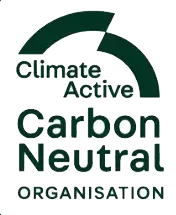Key considerations for cell therapy tech transfer to GMP production
Cell therapy tech transfer blog
Despite the no-man’s land between academia and industry is a well-trod area, it is still fraught with pitfalls this is especially the case when it comes to cell therapy tech transfer. While researchers are often frustrated with the overbearing rigour and control that forms the backbone of GMP, the industry too, is baffled by the seemingly laisse-faire approach in research. However, in order to translate research into meaningful therapies, industry and academia must be able to work harmoniously.
With this in mind, and to assist with the cell therapy tech transfer ‘translation’, I’ve compiled a checklist of different areas to consider when performing tech transfer to GMP.
1. Define the Source Material
Issues in cell therapy tech transfer often arise as a result of the product development process starting outside of the industry for which it is intended, e.g. cell lines developed in academia passed to industry without any certificates of origin, or even cell lines that have not been fully characterised. This of course can lead to problems later down the track when Production are trying to make consistent batches for GMP validation purposes and wondering why the process isn’t working properly.
The table below outlines some key questions to answer when selecting your source materials:
Case study:
In the UK there is a lot of emphasis placed on getting material that is TSE/BSE free, and companies have been known to source as far as New Zealand.
One company obtained blood from 4 different NZ donors with an aim to purify and expand the CD34+ cell population (hematopoietic stem cells that makes up around 0.03% of peripheral blood).
3 batches from 3 donors were processed in GMP cleanroom conditions and were successful, however one batch failed to generate any CD34+ cells despite 2 additional trials. Further investigation into the original donor revealed they were using methotrexate at the time of the donation (known to be an immune system suppressant and inhibitor of cell division).
2. Define the Product
EMA/CAT/80183/2014 are the “go to” regulatory guidelines for cell therapy product design, BUT, the field is fast moving and the regulations are not always up to date. A good rule of thumb for cell therapy tech transfer is to design products for the international market – if it’s good for one, it’s likely going to be good for another (pending some minor tweaks).
The table below picks out some key questions when defining the product and identifying any potential risks:
Case study:
A CAR-T therapy uses a viral vector to transform immune cells of a patient (T cells). T cells are incubated with the vector to transform cells, after which vector is washed out of the culture by dilution and/or medium exchange.
3. Define the Manufacturing Process
Starting materials can be another source of frustration in cell therapy tech transfer as they are not always GMP quality. Cell lines may also be exposed to uncontrolled or non-human materials and consumables (e.g. mouse laminin for coating plates, vectors and viruses, BSA, cell lines). Ideally any manufacturing changes curing cell therapy tech transfer should be made as early as possible in the process to show that proceeding studies are still relevant (i.e. clinical data).
The table below highlights some key GMP considerations:
4. Define the Testing Requirements
Unlike other pharmaceuticals, biotech products often require very custom testing. There can also be unknown viral risks in new animals that require in-depth sequencing. Testing requirements must be defined as a part of the cell therapy tech transfer process.
The table below outlines some key questions relating to testing:
To sum up:
To ensure as much success in the cell therapy tech transfer process as possible, ensure you:
- define the quality of the source material
- design out any foreseeable safety risks
- select the most appropriate manufacturing platform for your process
- check that your materials and consumables are GMP-friendly
- check that your process is operator-friendly
- identify the appropriate testing regimen for the product.
A big thing to note is that even if all the due diligence has been completed from initial research to GMP translation, the therapies themselves can change when they are in the patient environment.
Best thing to do is eliminate all the predictable sources of error in advance so you can address any additional surprises when they arise later down the track!
Want more?
If you want to have a chat about how PharmOut can assist you with cell therapies, including training, please feel free to get in touch contact us at one of our offices around the world.

If you liked this content you may also find the following blogs of interest:


